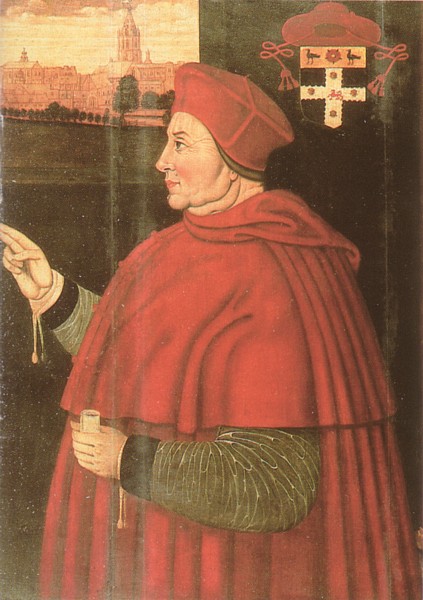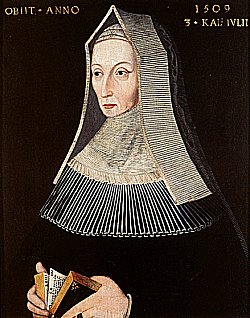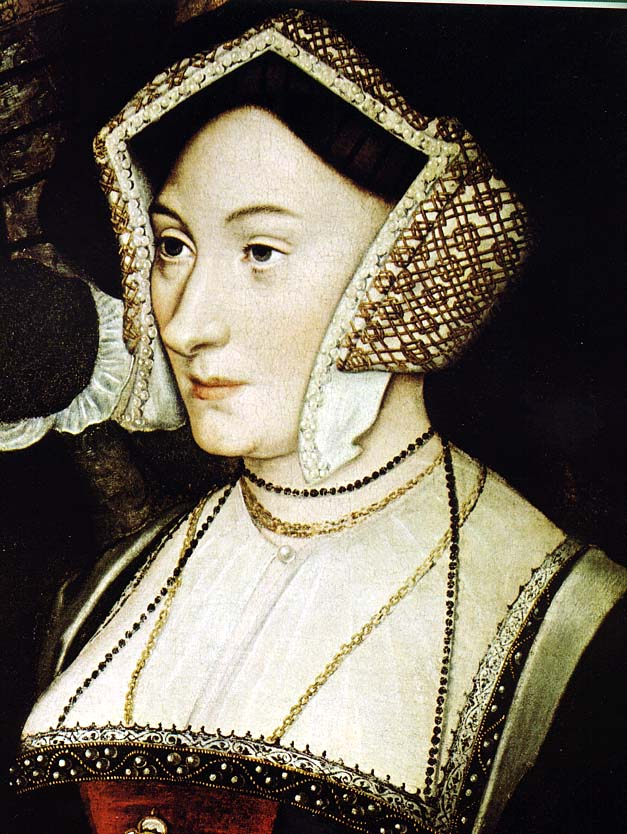.The English Reformation
WYH2003HS Spring 2003-- February 4
Links
You can see the webpage for the English Reformation which David Neelands and I used this past fall for "Anglican History and theology".
This website by an Australian named Greg Smith calls itself "the best A Man for All Seasons study side."
Links from the Michigan State University website to which you'll have found links from previous pages in our "early modern" course website.
Lots of primary documents from the Hanover Historical Texts Project.
One of the best known contemporary historians of the English Reformation, Diarmaid MacCulloch, in a resource for English A-level exams, attacks what he calls the myth-making of nineteenth-century Anglo-Catholic historians. This was no "via media", he says, but radical Protetantism.
The above is excerpted. The whole article is available from the journal History Today, but you'll need to access it from a U of T computer or else connect your home computer to a U of T proxy server.
Before and after


Compare the expressions, physiques, clothing, background, and symbols in these paintings of Thomas Wolsey, archbishop of York 1514-1530, with Thomas Cranmer, archbishop of Canterbury 1533-1556.
Theological or political?
Most historians of the English Reformation interpret it as a primarily political (and economic) event, imposed from the top down. A minority believe it was a religious event, perhaps imposed from the top down (by Protestant leaders such as Archbishop Thomas Cranmer and the king's secretary, Thomas Cromwell), or perhaps emerging from the bottom up (by preachers and Lollards exploiting the anticlerical sentiment of the population). A.G. Dickens, in his classic The English Reformation, says it was both — two reformations, independent in cause but closely connected in process. Justo González, in our textbook, begins the story as a political narrative, but then says (pp. 73-74) that there were English aedvocates of reform who "saw the events of their time as an opportunity to achieve it". (Personally, I'm inclined to Dickens' view.)
González thinks that Henry VIII was politically motivated in his church affairs. This is the majority view. But J.J. Scarisbrick's biography, Henry VIII, portrays him as very theologically conversant, a humanistically trained prince with facility in Latin who both read and wrote theological works and discussed them with his counsellors, and who attended mass daily. While we are no doubt all of us subject to self-deceptions in assessing our real motivations, I think that Henry likely thought of himself as concerned with the Gospel and the Church.
In class we'll view snippets of Shakespeare's Henry VIII, the BBC production of The Six Wives of Henry VIII, and A Man for All Seasons.
Some women of the English Reformation
 Margaret
Beaufort (1443-1509), mother of Henry VII (grandmother of Henry
VIII), was an early humanist and sponsor of humanism. She was the patron
of the first English printer, William Caxton. She founded two new colleges,
and founded two chairs in divinity, one at Oxford and one at Cambridge
(the Lady Margaret chairs).
Margaret
Beaufort (1443-1509), mother of Henry VII (grandmother of Henry
VIII), was an early humanist and sponsor of humanism. She was the patron
of the first English printer, William Caxton. She founded two new colleges,
and founded two chairs in divinity, one at Oxford and one at Cambridge
(the Lady Margaret chairs).
 Margaret
Roper (1505-1544), the daughter of Thomas More, was also educated
in the humanist tradition. More, unlike most of his contemporaries, was
a firm advocate of the humanist education of girls. Erasmus called her
"the ornament of England", and she translated one of his works
from Latin into English. She also wrote poetry, all of which has been
lost. After her father's execution, she recovered his head from where
it was spiked on London Bridge, a seriously criminal act, but the judges
were so impressed with her courage that they refused to condemn her.
Margaret
Roper (1505-1544), the daughter of Thomas More, was also educated
in the humanist tradition. More, unlike most of his contemporaries, was
a firm advocate of the humanist education of girls. Erasmus called her
"the ornament of England", and she translated one of his works
from Latin into English. She also wrote poetry, all of which has been
lost. After her father's execution, she recovered his head from where
it was spiked on London Bridge, a seriously criminal act, but the judges
were so impressed with her courage that they refused to condemn her.

Elizabeth (1533-1603), here as princess in about 1546. Ironically, though much of Henry VIII's policy was predicated on the principle that no woman could possibly be an effective ruler of England, his daughter Elizabeth is widely regarded as the most successful of all its monarchs. (A possible competitor for this honour is — Victoria!) The "Elizabethan settlement of religion" laid the legal, doctrinal, and liturgical basis of the modern Church of England, of which she was the first "supreme governor".